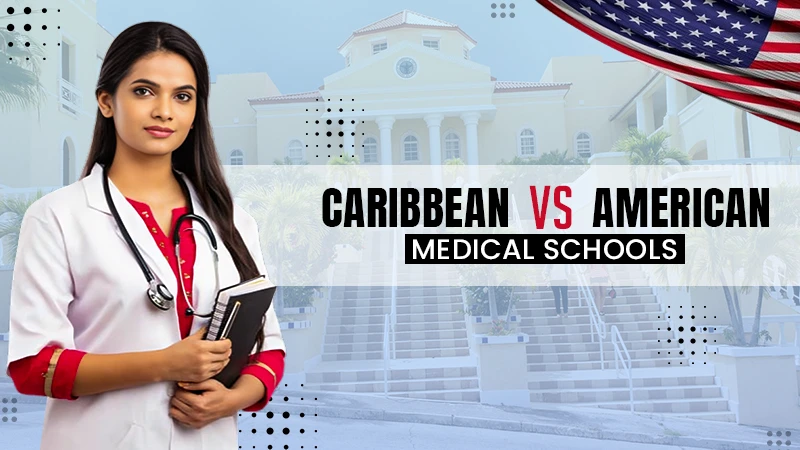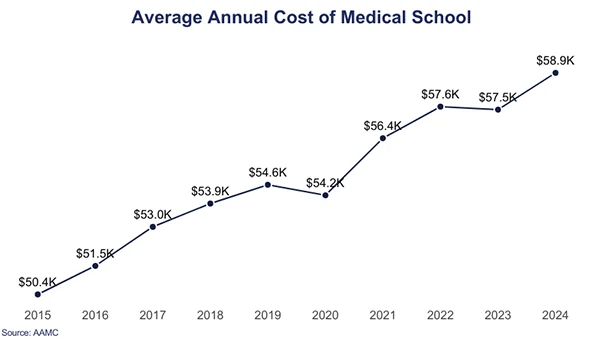
“Study hard until you can say “I am a doctor” everything is going to be alright.”
As an inspiring medical student, you may want to lay a strong foundation for your future trajectory. Because that is what eventually going to define your job profile and future residency.
And if you have ever thought of attending a medical school, you might be wondering whether studying abroad in the Caribbean is a better option than the United States.
Well, hang on my friend because you are about to find out!
It’s more than just about learning the basics of medicine, but more of a connection and opportunities that you will gain along the way.
So, in this comprehensive guide, I’m going to walk you through the complete model of the Caribbean and American medical schools, their similarity, and differences.
We will also explore how experts can help you build a competitive application.
Let’s start!
Caribbean Medical School
Did you know, that the AAMC (Association of American Medical Colleges) has confirmed that only 41% of the applicants make it to the U.S. medical school? With their tough-to-beat exam, considerable background checks, and specific GPA requirements.
But what happened to the other ones, those who are passionate about being in the medical field but couldn’t make it in the American medical schools? Well, this is where the Caribbean medical schools come into play.
Caribbean medical schools are considered a go-to alternative with their holistic approach towards the whole admission.
Pros
Let’s just now take a look at the pros of studying medicine in Caribbean medical schools:
Easier acceptance:
The average prerequisite for getting into U.S. medical schools is a 3.6 GPA and 31 MCAT scores. On the other hand, the Caribbean medical schools are more lenient towards the entire admission process.
They offer admission, which is not solely based on an individual’s academic scores but also their other core strengths. And most importantly, their passion for medical science.
Admission throughout the year:
Unlike the U.S. medical schools, where admissions only happen once a year. Which is further combined with the lengthy admission process and a long waiting period.
The admissions in the Caribbean medical schools occur throughout the year, and you can also apply during your final years to minimize the gap.
Diverse communal and out-of-campus experience
One of the major plus to studying in the Caribbean medical schools is the kind of experience you get where you get to experience different cultures, festivals, and a lot more about medical diseases and conditions.
Practical experience in the early semesters:
Studying medicine is all about practical knowledge, and Caribbean medical schools take this seriously. They offer a little too early clinical experience to their students that helps students get a better understanding of the medical concepts.
Did You Know?
The best medical colleges in the Caribbean known as the Big 4 are St. George’s University School of Medicine, American University of the Caribbean School of Medicine, Ross University School of Medicine, and Saba University School of Medicine.
Cons
Here are some of the cons to study medicine in the Caribbean schools:
Limited options for specialty: The Caribbean medical school offers a very limited amount of options for the specialty. Which is a major drawback if we compare it to the American medical schools.
High living expenses without aid:
Caribbeans can be expensive, especially if you are living near the islands. Because the prices there are touching the sky. This is why the students need to consider financial aid.
Fewer residency options without connection:
Since it is your initial step towards the real-world medical journey, exploring your options for future residency is paramount. This is why my advice to you is to opt for the institutions that offer clinical rotations in the U.S.
American Medical School
Pros
Take a look at the pros of studying medicine in the United States:
Finest quality education:
U.S. medical schools are known for their high-quality medical curriculum that produces some of the finest medical professions throughout the year. On top of that, the curriculum is solely based on research in laboratories and hands-on experience in clinical training.
Worldwide recognition:
Getting into the American medical schools is like a dream for the future medical professionals. Not only because of the reputation they hold but also their global recognition
High residency match rate:
The U.S. medical schools offer a high residency match rate. Where nearly 94% of the graduates are placed into residency training programs located in the U.S. hospitals.
Did You Know?
The enrollment of students to study medicine has risen to 31% since the year 2002 with almost 84% of the graduation rate.
Cons
Here are some of the disadvantages of studying medicine in the U.S.:
Admission difficulty:
As we discussed earlier, getting into the American medical school is tough, with just 41% of the applicants getting admitted. It becomes only 2% when it comes to the top universities in America.
This is where Inspira Advantage’s experts help you build a perfect application to help you wipe out your entire completion.
Costly affair:
Standing medicine is already about investing a lot of money. When we combine it to study it in America, it becomes really expensive for a major chunk of the population. That can exceed up to $400,000 with tuition, living expenses, and other fees.

{The above graphs show the average annual cost of medical schools from 2015 to 2024}
What Are the Biggest Differences?
Now take a look at the table below that briefly explores the major difference between U.S. and Caribbean medical schools:
| Differences in | US Medical Schools | Caribbean Medical Schools |
| Admission Process | Rigorous admission process | Easier to get accepted |
| Affordability | It is a costly affair, where expenses can exceed up to $400,000. | It is affordable when compared to U.S. medical schools. |
| Residency match rate | The average residency match rate here is around 90 to 95%. | The average residency match rate is 70%. |
| Tuition and Fees | $28,000–$75,000 per year | $7,000–$50,000 per term |
| Living Expenses | $12,000–$40,000 per year | $3,000–$15,000 per year |
| Visa hurdle | Getting a U.S. student visa is a daunting task with a high rejection rate. | Getting a visa in the Caribbean is easier. |
| Recognition | American institutes are globally recognized as the finest medical schools | Less worldwide recognition when compared to American medical schools. |
Final Thoughts
In closing, both Caribbean and American medical institutes offer the finest medical education that produces the finest medical professionals.
While the Caribbean medical schools may offer some residency-matching challenges, their affordability and easy admission process make them a reliable option.
Similarly, on the other hand, it may be difficult to get into American medical schools but the reputation they hold combined with future opportunities is worth a try.
So, regardless of the medical institutes, make sure that they aligns with your goals and provides you with a secure future in the field of medicine.